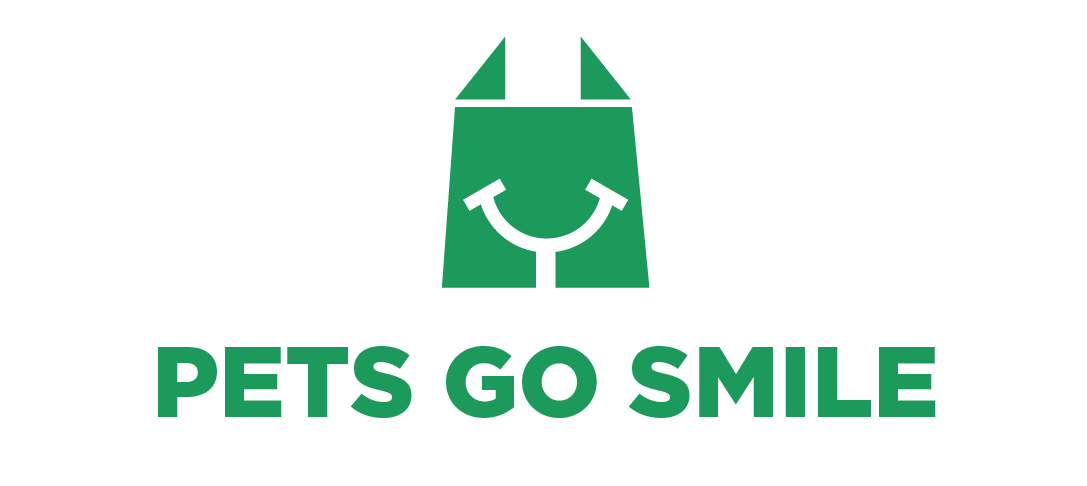Welcome to the definitive guide on launching your very own pet supply business!
Whether you’re a passionate vet clinic owner looking to expand your offerings or an aspiring entrepreneur interested in the thriving pet industry, this article is your gateway to success.
With pet ownership skyrocketing and growing demand for high-quality pet supplies, there has never been a better time to embark on this exciting venture.
In this comprehensive guide, we will navigate through the critical steps involved in starting a pet supply business , equipping you with the knowledge and strategies needed to stand out in a competitive market.
So, fasten your seatbelts and get ready to unleash your inner entrepreneur as we dive into the world of pet supplies with a smart and engaging approach.
Practices on How to Start a Pet Supply Company
Market Research and Analysis
Understanding the demand for pet supplies
To successfully start a pet store business, it’s crucial to have a deep understanding of the demand for pet supplies in the market.
By keeping a finger on the pulse of the pet supply industry trends, you can identify the evolving needs and preferences of pet owners.
Stay updated on the latest advancements in pet products, such as eco-friendly or organic options, and take note of any emerging trends like premium pet food or innovative pet toys. Conducting thorough research on pet ownership statistics is equally important.
Through examining the number of households with pets, the average expenditure on pet supplies, and the overall growth of the pet industry, you can gain valuable insights into the size and potential of your target market.
This knowledge will enable you to make informed decisions when selecting products, setting prices, and developing effective marketing strategies.
Identifying the target market:
Target audience segmentation is a fundamental aspect of any successful business venture, and the pet supply industry is no exception.
By segmenting the market, you can identify specific groups of pet owners with distinct characteristics, needs, and preferences. Understanding the pet owner demographics is essential to tailor your product offerings and marketing messages accordingly.
Consider factors such as age, income level, geographic location, and pet type (e.g., dogs, cats, birds) when creating customer profiles.
This segmentation allows you to develop targeted marketing campaigns that resonate with each segment, leading to more effective customer acquisition and retention strategies.
By identifying your ideal customers, you can focus your efforts on providing products and services that cater specifically to their needs, ultimately driving the success of your pet supply business.
Analyzing the competition:
Analyzing the competitive landscape is a critical step in starting a pet supply business.
Thoroughly researching pet supply store competition in your target market will provide insights into the existing players, their product offerings, pricing strategies, and customer satisfaction levels.
By studying their strengths and weaknesses, you can identify opportunities for differentiation and competitive advantages. Additionally, exploring potential vet clinic partnerships can offer unique opportunities for collaboration and mutual growth.
Partnering with vet clinics can give you access to their customer base, providing a valuable channel for promoting your products. By building strong relationships with vet clinics, you can establish trust and credibility within the pet community, enhancing the visibility and reputation of your pet supply business.
Developing a Business Plan
Setting business goals and objectives:
When starting a pet supply business, it’s essential to establish clear and actionable business goals and objectives.
These goals will serve as your roadmap and guide your decision-making processes. Begin by defining your long-term vision for the business.
What do you ultimately want to achieve? Whether it’s becoming the go-to pet supply store in your area or expanding to multiple locations, having a clear vision will help you stay focused and motivated.
Next, break down your vision into specific, measurable, achievable, relevant, and time-bound (SMART) goals.
For example, setting goals such as increasing sales by a certain percentage within the first year or expanding your product line to include niche pet accessories. Additionally, revenue projections are vital for estimating your expected income and expenses.
Conduct thorough market research to understand the potential demand for your products and determine realistic revenue projections. By setting well-defined goals and having revenue projections, you’ll have a solid foundation for planning and measuring the success of your pet supply business.
Choosing a business structure:
Selecting the right business structure is an important decision that impacts your legal obligations, tax liabilities, and personal liability.
Understand the legal requirements for a pet supply business in your jurisdiction to ensure compliance. Two common business structures for small businesses are sole proprietorship and limited liability company (LLC).
A sole proprietorship offers simplicity and allows you to have full control over your business. However, keep in mind that you assume unlimited personal liability for any business debts or legal issues.
On the other hand, forming an LLC provides personal liability protection, separating your personal assets from business liabilities.
Additionally, an LLC may offer tax benefits and flexibility in terms of ownership and management of pet business. Consult with a legal professional or business advisor to determine the most suitable structure for your pet supply business, taking into account factors such as personal liability, taxation, and future growth plans.
Creating a budget and securing funding:
Developing a comprehensive budget is essential for managing your finances effectively and ensuring the financial stability of your pet supply business.
Start by listing all your startup costs and ongoing expenses, such as store rent, utilities, inventory, employee salaries, marketing expenses, and any necessary licenses or permits. Research and allocate realistic amounts for each item to estimate your total expenses accurately.
Consider various funding options, such as personal savings, loans, or partnerships, to secure the necessary capital for your business. If seeking external funding, prepare a well-structured business plan and financial projections to present to potential investors or lenders.
Explore small business loans specifically designed for pet-related ventures or consider crowdfunding platforms to raise capital from a wider audience.
Additionally, seek advice from financial advisors or small business development centers to ensure you have a solid financial plan in place.
By creating a budget and securing funding, you’ll have the financial foundation needed to launch and sustain your pet supply business.
Sourcing and Managing Inventory

Establishing relationships with suppliers:
Building strong relationships with reliable and reputable suppliers is crucial for a successful pet supply business.
Look for pet supply distributors who specialize in supplying a wide range of pet products. These distributors often have established relationships with manufacturers and can provide you with a diverse selection of products.
Wholesale pet supply suppliers are another valuable resource for retail pet store space, especially for niche or unique pet products. Research and connect pet store industry with wholesalers who offer competitive pricing and high-quality merchandise.
Attend trade shows, industry events, and networking sessions to meet potential suppliers and assess their product quality, delivery times, and customer service.
Establishing mutually beneficial partnerships with suppliers can lead to better pricing, priority access to new products, and enhanced product availability, ensuring that your pet supply business stays competitive in the market.
Determining the product mix:
To meet the diverse needs of pet owners, it’s important to carefully determine your product mix. Start by focusing on essential pet supplies that are in high demand across all pet types, such as food, treats, collars, leashes, and grooming products.
These items form the foundation of your inventory and are necessary for pet owners on a regular basis. Additionally, stay updated on trending pet products to attract customers seeking the latest and most innovative pet accessories.
Monitor industry publications, attend pet trade shows, and conduct online research to identify emerging trends. Consider products like smart pet toys, eco-friendly pet supplies, or specialized dietary products that align with current consumer preferences.
By offering a well-balanced product mix that combines essentials and trending items, you can cater to a broader customer base and maximize your sales to potential clients.
Inventory management strategies:
Efficient inventory management is vital to ensure product availability, minimize costs, and prevent stockouts or overstocking.
Implementing inventory tracking software is an excellent way to streamline and automate your inventory management processes. Look for software solutions that provide real-time inventory visibility, automated reordering, and analytics to help you make data-driven decisions.
This technology enables you to track inventory levels, monitor product performance, and generate reports for forecasting and planning purposes. Adopting stock rotation and replenishment practices is equally important. Regularly assess your inventory to identify slow-moving or obsolete items and adjust your purchasing decisions accordingly.
Implementing a first-in, first-out (FIFO) system ensures that older stock is sold before newer stock, reducing the risk of expiration or obsolescence.
Regularly review and optimize your inventory management strategies to maintain optimal stock levels, minimize carrying costs, and provide a seamless shopping experience for your customers.
Creating an Online Presence for Pet Owners

Building a professional website:
Creating a professional website is crucial for establishing your online presence and reaching pet owners in the digital realm.
Start by designing a visually appealing and user-friendly website that reflects your brand identity. Incorporate elements such as high-quality product images, clear navigation menus, and easy-to-use search functionality to enhance the user experience.
Consider hiring a professional web designer who specializes in pet supply business website design to ensure a polished and visually appealing site. Additionally, selecting the right e-commerce platform is essential for selling your products online.
Research different platforms and choose one that offers features specific to pet supply businesses, such as inventory management, secure payment gateways, and product customization options.
Examples of popular e-commerce platforms include Shopify, WooCommerce, and BigCommerce. By building a professional website and selecting a suitable e-commerce platform, you can create a seamless online shopping experience for all pet lovers and owners.
Optimizing the website for search engines:
To increase your online visibility and attract organic traffic to your website, it’s essential to optimize your website for search engines.
Implementing effective search engine optimization (SEO) strategies is key to improving your website’s ranking in search engine results pages.
Do this by conducting keyword research specific to the pet supply industry. Identify relevant keywords such as “pet supplies,” “dog food,” or “cat toys,” and incorporate them naturally into your website content, including product descriptions, blog posts, and meta tags.
Focus on creating high-quality and informative content that addresses the needs and interests of pet owners. Additionally, optimize your website’s technical aspects, such as ensuring fast loading times, mobile responsiveness, and easy navigation.
Submit your sitemap to search engines, utilize meta tags and alt attributes for images, and build high-quality backlinks from reputable pet-related websites.
Utilizing social media and online marketing:
Social media platforms offer valuable opportunities to connect with pet owners and promote your products effectively. Create social media accounts for your pet supply business on platforms such as Facebook, Instagram, and Twitter.
Develop a social media marketing strategy that includes engaging content, informative posts, and visually appealing images or videos. Share helpful tips for pet care, showcase new products, and encourage user-generated content through contests or giveaways.
Utilize targeted advertising options provided by these platforms to reach a wider audience of pet owners who are likely interested in your products. Additionally, implement email marketing campaigns to engage with your customers directly.
Build an email subscriber list by offering incentives such as exclusive discounts or valuable pet-related content. Send regular newsletters featuring product updates, promotions, and educational content to nurture customer relationships and drive repeat purchases.
Implement targeted online marketing strategies such as email campaigns to nurture customer relationships and drive repeat business. By leveraging these online strategies, you can establish a strong online and social media presence, attract pet owners to your website, and ultimately grow your pet supply business.
Establishing Partnerships and Collaborations for your Pet Store
Building relationships with vet clinics:
Establishing strong partnerships with vet clinics can be mutually beneficial for both your pet supply business and the clinics.
By collaborating with vet clinics, you can tap into their existing customer base and reach a wider audience of pet owners.
Start by reaching out to local vet clinics and introducing your pet supply business. Offer to provide them with informational brochures or samples of your products to distribute to their clients.
Explore opportunities for cross-promotion, such as offering exclusive discounts to vet clinic clients or displaying your products in their waiting areas.
Collaborate with pet shops on educational events or workshops to provide valuable information to pet owners while showcasing your expertise and products. By building relationships with vet clinics, you can establish trust and credibility within the pet community, expand your customer reach, and create a mutually beneficial partnership.
Collaborating with pet rescue organizations and other pet store owners:
Collaborating with pet rescue organizations and other pet store owners can create unique opportunities for partnerships that benefit both your business and the pet community.
Consider organizing pet adoption events in partnership with local rescue organizations.
These events not only provide a platform for finding loving homes for animals in need but also bring potential customers to your store.
Collaborate with pet store owners who offer complementary products or services.
For example, if you specialize in pet food, you could collaborate with a pet store that specializes in pet accessories to create joint promotional campaigns or bundle offers. Another way to collaborate is through charity partnerships.
Identify pet-related charities or causes aligned with your brand values and donate a portion of your sales or organize fundraising campaigns.
By fostering these partnerships and collaborations with other local businesses and pet businesses together, you can strengthen your community presence, attract new customers, and establish your pet store as a trusted and valued entity in the pet industry.
Providing Excellent Customer Service
Training staff on pet product knowledge:
Providing excellent customer service starts with having knowledgeable and well-trained staff who can assist pet owners with their specific needs.
Implement customer service training programs specifically tailored for pet supply businesses to ensure that your staff understands the products you offer and can provide informed recommendations.
Train them on various pet product categories, such as food, treats, toys, and grooming supplies, so they can assist customers in making informed purchasing decisions.
Provide resources such as product catalogs, training manuals, and access to reputable sources of pet product information. Encourage ongoing learning and staying up-to-date with new product releases and industry trends.
Implementing loyalty programs and rewards:
To foster customer loyalty and encourage repeat business, implementing loyalty programs and rewards is a highly effective strategy.
Design loyalty programs that offer incentives and exclusive benefits to your frequent customers. Consider providing points-based systems where customers can accumulate points with each purchase and redeem them for discounts or free products.
Offer personalized rewards and special promotions on customers’ birthdays or anniversaries with your store.
This personal touch shows that you value their patronage and strengthens the customer-business relationship. Implement referral programs where customers can earn rewards for referring their friends and family to your pet supply store.
By implementing customer retention strategies through loyalty programs and rewards, you can incentivize repeat purchases, increase customer satisfaction, and ultimately drive customer loyalty.
Ensuring Legal and Regulatory Compliance
Complying with legal and regulatory requirements is crucial to operate a pet supply business ethically and avoid potential legal issues. Understand the specific regulations pertaining to pet products in your jurisdiction.
Research pet supply business regulations, such as those governing product safety, labeling, and advertising.
Ensure that your products meet the required standards and comply with any specific labeling and packaging requirements, such as listing ingredients and nutritional information.
Consult with regulatory agencies or legal professionals to ensure you have a comprehensive understanding of the regulations applicable to your business.
In addition to product regulations, obtain the necessary licenses and permits required for selling pet products in your area.
Research and comply with licensing requirements specific to your pet store name and supply businesses, such as obtaining a retail license or a permit to sell pet products. By ensuring legal and regulatory compliance, you protect your pet store business’s reputation, build trust with customers, and minimize the risk of legal complications.
Takeaways
In conclusion, starting and running a successful pet store business requires careful planning, strategic decision-making, and a customer-centric approach.
By following the steps outlined in this comprehensive guide, including conducting market research, developing a solid business plan, sourcing and managing inventory effectively, creating an online presence, establishing partnerships and collaborations, providing excellent customer service, and ensuring legal and regulatory compliance, you ‘ll be well-equipped to navigate the challenges and seize the opportunities in the pet supply industry.
Remember, the key to success lies in understanding the needs and preferences of pet owners, delivering exceptional products and services, and building strong relationships within the pet community.
So, unleash your entrepreneurial spirit, embark on this exciting venture, and make a positive impact in the lives of pets and their owners through your pet supply business.




